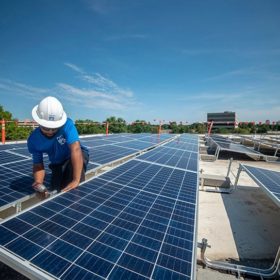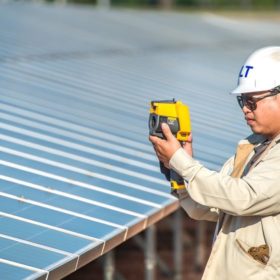Sinovoltaics maps out Southeast Asian PV manufacturing sites
The latest supply chain report from the Hong Kong-based technical compliance and quality assurance company covers the Southeast Asia region, providing information about 50 manufacturing sites.
Southeast Asia has technical potential to deploy over 1 TW of floating PV
A group of researchers from the US National Renewable Energy Laboratory assessed the potential for floating PV (FPV) plants at reservoirs and natural waterbodies in 10 Southeast Asian countries. It found that the overall FPV technical potential for the region ranges from 477 GW to 1,046 GW.
Cambodia to scrap rooftop PV capacity charge, introduce new tariffs
Cambodia’s Ministry of Mines and Energy has published a document outlining principles to permit the use of rooftop PV. The new policy replaces a monthly capacity fee for rooftop systems, with a tariff calculated based on an intricate formula.
Solarspace opens 1.2 GW solar module factory in Cambodia
Solarspace’s newly minted factory is located in the UBE Snoul Special Economic Zone, in the Snuol district. It will produce PERC panels and will reach full capacity by the end of March 2023.
ADB, EDC launch 2 GW solar program in Cambodia
The Asian Development Bank (ADB) and Électricité du Cambodge (EDC) have signed an agreement to develop 2 GW of solar in the Southeast Asian country. EDC will conduct a nationwide study to identify potential solar and storage projects for implementation up to 2030.
In Asean nations it’s all about the solar
Indonesia will have to get to work installing more than 24 GW of solar this year – and every year – if the region is to achieve the 2.1 TW to 2.4 TW of photovoltaics Irena has estimated it will require to achieve a net zero carbon energy system by 2050.
Cambodia’s steeplechase towards renewable energy
The southeast Asian country is currently applying a monthly capacity fee on rooftop PV systems and the government may halve it in an effort to spur more solar installs. Several more hurdles, however, should be removed to ensure further growth.
Solar-plus-storage for mineral water producer in Cambodia
The system delivered by French energy giant TotalEnergies will power Kulara Water’s bottling facility in Siem Reap Province.
China holds the key to cancelling half the world’s new coal project plans
With pressure mounting on the world’s governments to turn their back on the fossil fuel, China and peers in South East Asia, Europe and South Asia could help deliver a coal-free future at the COP26 climate summit planned in Glasgow in November.
Covid-19 pandemic puts 150 GW of PV, wind at risk in Asia
Up to 150 GW of PV and wind projects could be postponed or canceled throughout the Asia-Pacific region by 2024 if the coronavirus-triggered recession continues beyond the current year, according to new research by Wood Mackenzie.










